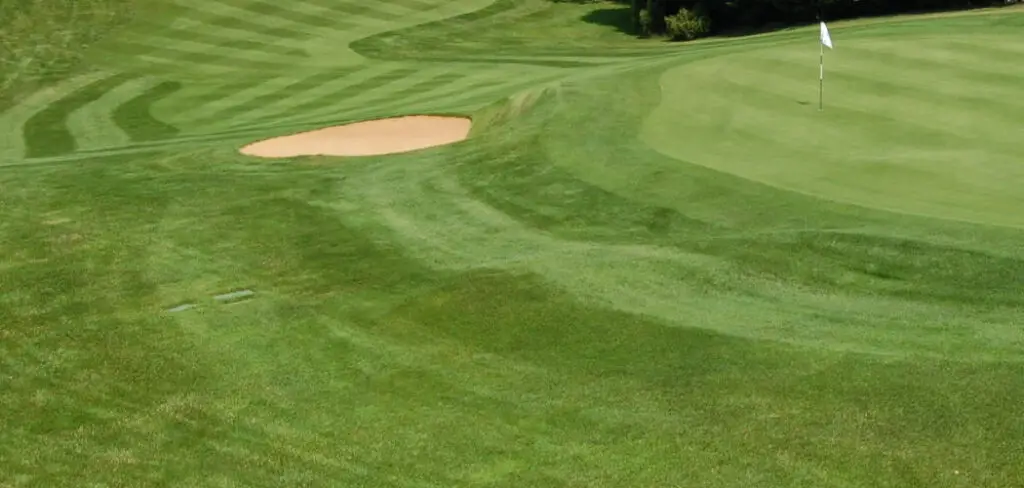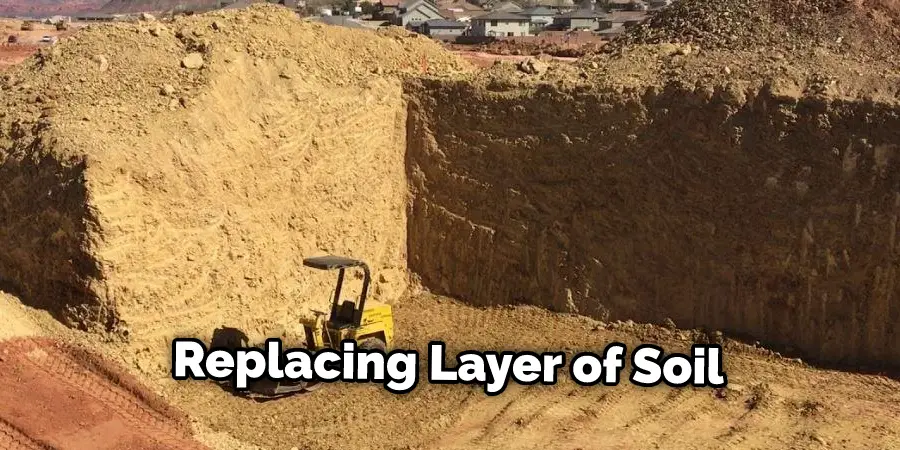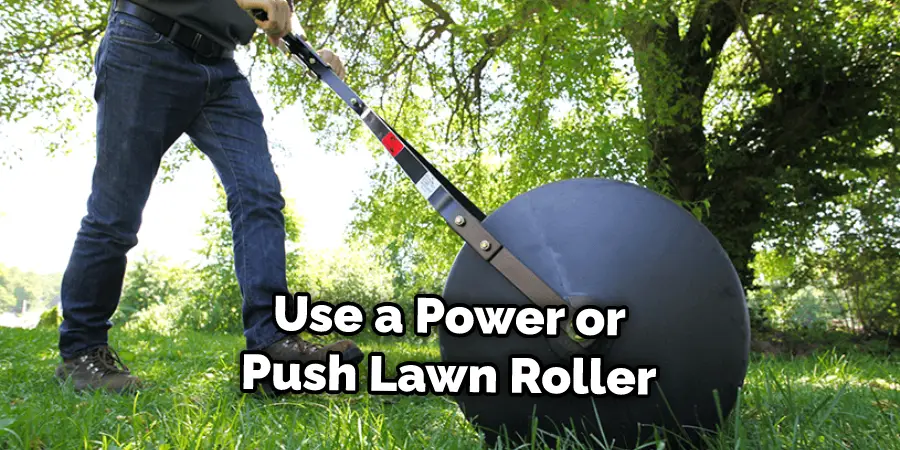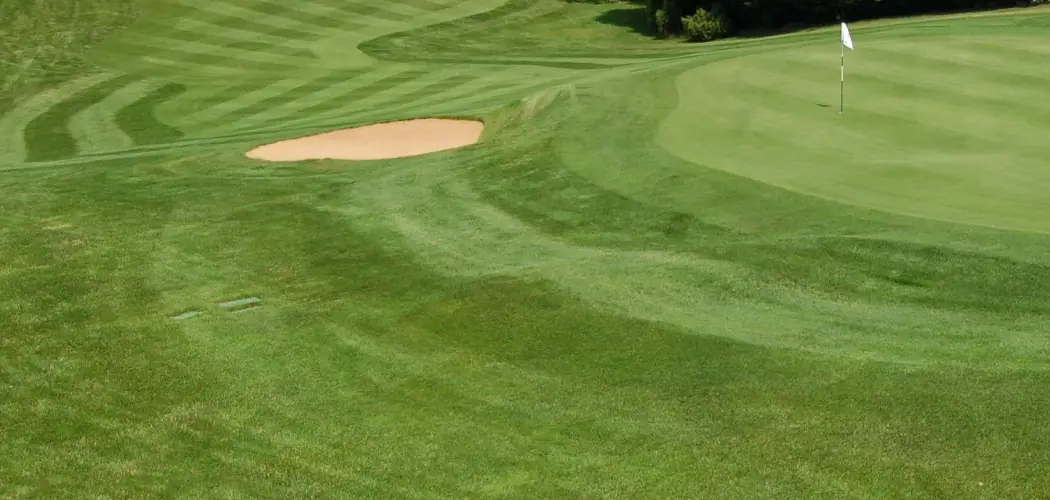When it comes to your lawn, bumps, and divots can give any homeowner headaches. It doesn’t matter if you have a flat backyard or a sloping landscape–lumps and undulations are never pleasant to look at.

But there is hope! There are several techniques you can use to smooth out a bumpy lawn and make it the envy of your neighbors. From core aeration to regarding sections of your grass, this guide will walk you through all the steps necessary how to smooth out a bumpy lawn into an aesthetically pleasing swath of greenery in no time!
Read on for some great tips that will help turn your bumpy lawn into something worthy of boasting about!
Will Rolling My Lawn Flatten It?
Rolling a lawn is a fast and easy way to smooth out bumps, but it isn’t the only solution for improving uneven terrain. Rolling is an option if you have small bumps that are mostly confined to localized areas, like those caused by dog footprints or minor compaction from the furniture.
If your entire lawn is bumpy or your small bumps are widespread, rolling won’t be enough to flatten the terrain. However, rolling can help reduce large bumps before you take further steps to level and seed your lawn.
To roll a lawn, you’ll need a roller filled with water or sand—never use an empty roller as it can cause permanent damage to the grass. Position the roller over each bump and push or pull it until the bump is flattened.
Be sure not to roll more than once over each area, as this can cause compaction of the soil and damage your lawn. Rolling should be done in dry conditions—it’s not effective when the grass is wet and can easily tear out large chunks of turf if you try it on damp grass.
Once all the bumps have been flattened with rolling, you may need to take further steps to level the terrain before reseeding. Core aeration and topdressing are two effective methods for improving a bumpy lawn that won’t respond to rolling alone.
Both can help loosen compacted soil and create an even surface for new seedlings to take root. If you’re looking for a more permanent solution, you may also consider removing and replacing the top layer of soil to ensure that your lawn is level and free from bumps.

8 Effective Methods on How to Smooth Out a Bumpy Lawn
1. Aerate the Lawn.
Aeration is the process of making small holes in the lawn to allow air, water, and nutrients to reach the roots of the grass. This can be done with a hand aerator or a power aerator. Aeration is especially important for lawns that are heavily used, as it helps to relieve compaction and improve drainage.
If you have a large lawn, you may want to rent an aerator from your local home and garden store. Although it may seem like a lot of work, aerating your lawn is an important step in keeping it healthy and bumpy-free. Make sure to aerate your lawn at least once a year.
2. Overseed the Lawn.
Overseeding is the process of planting new grass seed over an existing lawn. This can help to fill in bare spots and improve the overall density of the lawn. It is best to overseed in the fall, as this is when grass seed germination is at its highest.
Before overseeding, the lawn should be mowed as short as possible in order to reduce the amount of competition for resources. The soil should also be loosened in order to ensure that the seed is able to reach the soil. With a broadcast seeder, start at one end of the lawn and slowly move in a zigzag pattern, overlapping each row to ensure that the entire surface is covered.
3. Reseed the Lawn.
Reseeding is similar to overseeding, but it involves completely removing the old grass and replacing it with a new seed. This can be a more intensive process than overseeding, but it can also provide better results. To reseed your lawn, start by mowing the grass as short as possible. Next, use a vertical slicer to remove and collect the turf or use a sod cutter to remove large patches.
Once the old grass is removed, rake and level the soil. Apply fertilizer and then spread new seeds over the entire lawn. Gently rake the seed into the soil and then water thoroughly. To ensure even coverage, a drop spreader may be used. Keep the lawn moist until the grass is established. This process can take several weeks, depending on weather conditions and the type of seed used.

4. Fertilize the Lawn.
Fertilizing your lawn can help to promote growth and make your grass healthier. It is important to use a fertilizer that is specifically designed for lawns, as other types of fertilizer can actually damage your grass. Apply fertilizer in the spring and fall for the best results.
Be sure to follow the instructions on the package and water your lawn after fertilizing. This will help the nutrients get down into the soil and reach the roots of the grass. While fertilizing your lawn can help to make it look better, it is important to remember that this will not fix problems caused by soil erosion or drainage issues.
These issues will require additional steps to repair. Make sure to pay attention to the weather when fertilizing your lawn, and avoid applying it just before a heavy rainstorm. This can cause the soil to be washed away and the fertilizer to be wasted.
5. Water Deeply and less Frequently.
Deep watering encourages deep root growth, which helps your grass to withstand drought conditions better. It is best to water your lawn early in the morning so that the sun can quickly dry up any water that remains on the leaves of the grass. Watering less frequently will also help to prevent fungal diseases from developing.
While you don’t want your lawn to be dry and brown, try to avoid over-watering, as this will prevent oxygen from getting to the grassroots. While a bumpy lawn may need more regular watering than its smoother counterparts, be sure to water deeply and infrequently for the best results.
6. Top Dress the Lawn.
Top dressing is another effective method for smoothing out a bumpy lawn. Top dressing involves spreading a layer of compost or other organic matter over the surface of the lawn. This helps to add nutrients to the soil and can also help to level out any bumps on the surface of the lawn.
To top dress a lawn spread an even layer of compost or organic matter over the entire surface of the lawn. Rake the material into the grass, then use a power or push lawn roller to smooth the surface out. This will help to fill in any low spots and even out the bumps.

7. Use a Power Rake.
A power rake is a tool that can be used to remove dead grass, moss, and other debris from the surface of a lawn. Power raking can also help to loosen compacted soil, which can make it easier for new grass roots to take hold and establish themselves. Additionally, power raking can help to level out any bumps on the surface of the lawn.
To use a power rake, start by setting the blades to their highest level. Then, push the tool slowly across the lawn with even pressure. After power raking, the entire lawn, use a rake to remove any debris left behind. Once that is done, your lawn should be smoother and ready for the next step in the process.
8. Use a Garden Roller.
A garden roller is a tool that can be used to flatten out bumps on the surface of a lawn. Garden rollers are filled with water or sand, which helps to weigh them down and give them extra traction as they are rolled over the surface of the lawn. Garden rollers are particularly effective at smoothing out large bumps on a lawn.
To use a garden roller, fill the roller with water or sand and roll it over the surface of the lawn until all bumps have been flattened out. It is important to ensure that the roller does not become too heavy, as this could cause damage to the lawn. For more information on using a garden roller to smooth out a bumpy lawn, consult the user’s manual for your specific garden roller.

Conclusion
Lawn upkeep, such as smoothing out a bumpy lawn, can help improve your home’s windows and value. After researching and applying turf care advice from experts, you are now armed with some tips and tricks that can help you take your lawn from bumpy to smooth.
From keeping the grass cut short to using the right equipment for the job, it is important to use the correct techniques in order to ensure the best results for your yard. We hope this guide on how to smooth out a bumpy lawn was helpful. Please share it with your friends on social media if you find it useful. And be sure to check back here soon for more informative guides like this one.
About
Outdoor Fixes is a distinguished figure in the world of Diy design, with a decade of expertise creating innovative and sustainable Diy solutions.
His professional focus lies in merging traditional craftsmanship with modern manufacturing techniques,
fostering designs that are both practical and environmentally conscious. As the author of diy,
outdoorfixes delves into the art and science of outdoorfixes-making, inspiring artisans and industry professionals alike.
Education RMIT University
(Melbourne, Australia) Associate Degree in Design (Outdoor Fixes) Focus on sustainable design, industry-driven projects,
and practical craftsmanship. Gained hands-on experience with traditional and digital manufacturing tools, such as CAD and CNC software.
Nottingham Trent University
(United Kingdom) Bachelor’s in outdoorfixes.com and Product Design (Honors) Specialized in product design with a focus on blending creativity with production
techniques. Participated in industry projects, working with companies like John Lewis and Vitsoe to gain real-world insights.
Publications and Impact
In diy, Outdoor Fixes his insights on indoor design processes, materials, and strategies for efficient production.
His writing bridges the gap between artisan knowledge and modern industry needs, making it a must-read for both budding designers and seasoned professionals.

